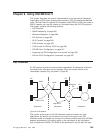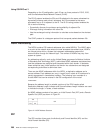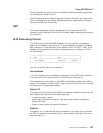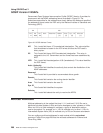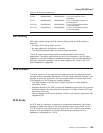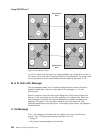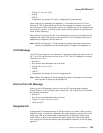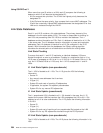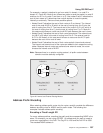v IS type (L1 only, or L1/L2)
v Priority
v LAN ID
v If applicable, the system ID of the L1 designated IS (pseudonode)
Upon receiving this message, the adjacent L1 IS extracts the source ID of the
sending IS. This IS then constructs its own IIH message and places its source ID
into the source ID field. The sender’s source ID is placed into the IS neighbors field.
Returning the sender’s ID verifies to the sender that the adjacent IS is aware that it
exists (2-way adjacency).
When the first IS receives the IIH, it too extracts the source ID and looks at the IS
neighbor field. Upon discovering its own source ID in the IS neighbor field, this IS
establishes an adjacency with the other IS.
Note: Before the adjacent L1 IS can accept the packet, the packet must have a
common area address and the same system ID length as the adjacent IS.
L2 IIH Message
The L2 IIH is multicast over its interfaces for purpose of identifying itself to other L2
ISs. The L2 IS has the same function as an L1 IIH. The L2 IS places the following
information in its IIH:
v Source ID
v Any manual area addresses that it services
v IS type (L2 only or L1/L2)
v Priority
v LAN ID
v If applicable, the system ID of the L2 designated IS
Note: Before the adjacent L2 IS can accept the packet, the packet must have the
same system ID length as the adjacent IS.
Point-to-Point IIH Message
A point-to-point IIH message is sent out over an IS’s non-broadcast interface
(Frame Relay or X.25) to identify itself to other ISs. This IS gives the IIH to contain
the following information:
v Source ID
v Any manual area addresses that it services
v IS type (L1 only, L2 only, or L1/L2)
v Local circuit ID
Designated IS
A designated IS is selected among all ISs connected to the same LAN to perform
additional duties. In particular it generates link state updates on behalf of the LAN,
treating the LAN as a pseudonode. A pseudonode is a method of modeling the
entire LAN as a node on the network with fewer logical links. Minimizing logical
links throughout the domain lessens the computational complexity of the link-state
algorithm.
Using OSI/DECnet V
Chapter 9. Using OSI/DECnet V 293



